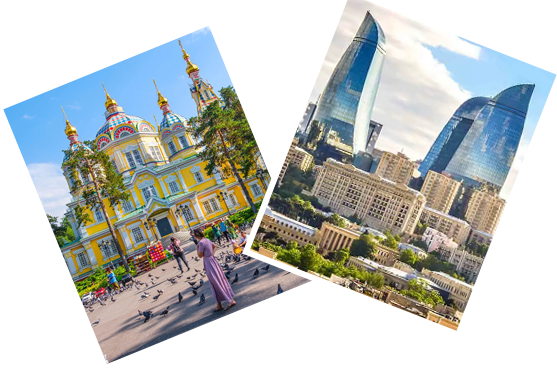‘Italy and the spring and first love all together should suffice to make the gloomiest person happy.’ As this was rightly quoted by the philosopher Bertrand Russell, the fatal charm of Italy is truly overwhelming for any and every visitor to the country. Arguably one of the top tourist hotspots and the eighth-largest country in the world, Italy offers countless experiences for all sorts of travellers. Here, the colossal ruins of Rome are fascinating and a rewarding experience for the history fanatics whereas the art galleries in Florence and the spectacular canals of Venice attract those who love to relish life at a leisurely pace. The streets and squares in Milan (the fashion capital of the country) also come under one of the iconic Italy Attractions and are an absolute delight for the curious shopaholics as well as for the art lovers who get instantly startled by the sculptures and paintings that take over the city’s beauty. Several small islands also form part of Italy thereby, making the country famed for its several beaches and their emerald waters. The country also has the world’s highest number of World Heritage sites and is a known home to Europe’s largest active volcano Mt. Etna. What’s more? The food (pizza, gelato and pasta, of course), the wine, Greek temples of Sicily, picturesque countryside roads in Naples, the quaint hillside towns of Tuscany, wine hills of Piedmont and the underrated dolomites…the list of places to visit in Italy is just endless, starting from the touristy destinations to the hidden marvels.
Talking about Italy’s capital Rome better known as the cradle of civilization, the city is abundantly crammed with the relics of its ancient glories that include museums and galleries, cathedrals and so much more. From the famed Colosseum to the historic centre of Roman Forum, the Pantheon and the Palatine Hill to the incredible Sistine Chapel, Rome is deeply immersed in historical riches that need to be experienced. Not to mention, no visit to experience the best places to visit in Rome is complete without a trip to St. Peter’s Basilica and scaling its heights is one fascinating experience to add to your Italy’s travel bucket list. Also, once in Rome, you can’t miss out on the opportunity of eating gelato on the Spanish Steps, relaxing in the Borghese gardens or tossing a coin in the Trevi Fountains. Those looking to satiate their taste buds or fill in food for the picnic baskets can head to the city's oldest food market-Campo Dei Fiori, as here you will find plenty of truffle oil, fresh pasta and sauces and the city’s famous staple-cured hams. In a nutshell, if there’s any place that is romantic, historic and timeless, there's nothing like Rome. Visiting the city soon and still figuring out the best in the list of Rome Attractions? Leave your worries aside as we have got your preferences covered!
Take a deeper plunge into the wonders of the country and pick your favourites out of the Best Italy Tourist Attractions mentioned below. Read now and thank us later!
Top Places to Visit in Italy and Rome:

St. Marks Square
Piazza San Marco often known in English as St Marks Square is the principal public square of Venice Italy where it is generally known just as la Piazza. All other urban spaces in the city are called campi. The Piazzetta is an extension of the Piazza towards San Marco basin in its south east corner. The two spaces together form...

Little Island of the Peschiera

Church of Santa Maria Maggiore

Casa Museo Pietro Moschini

Vatican Museums
The Vatican Museums are the public art and sculpture museums in the Vatican City. They display works from the immense collection amassed by the Catholic Church and the papacy throughout the centuries including several of the most renowned Roman sculptures and most important masterpieces of Renaissance art in the world. The museums contain roughly 70000 works of which 200

Basilica of Saint Paul Outside the Walls
The Papal Basilica of Saint Paul Outside the Walls commonly known as Saint Pauls Outside the Walls is one of Romes four ancient papal major basilicas along with the basilicas of Saint John in the Lateran Saint Peters and Saint Mary Major.

















